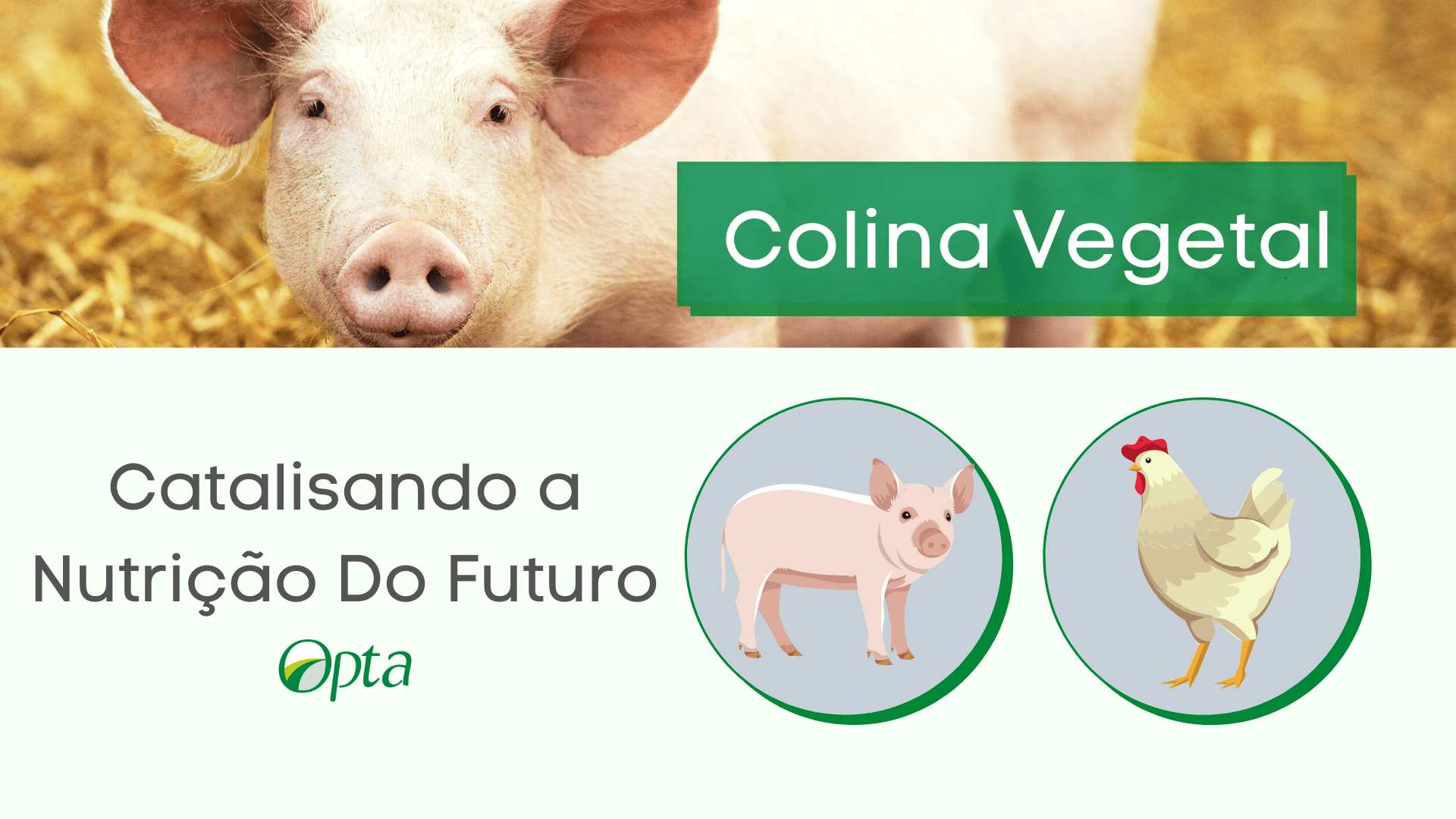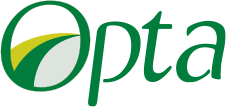Ascorbic acid (Vitamin C) – Broiler nutrition
Ascorbic acid Ascorbic acid, commonly called vitamin C, refers to compounds that exhibit L-ascorbic acid activity and is part of the group of water-soluble vitamins. […]
- 21/07/2021
- ler mais...

Choline (Pure) is an organic compound belonging to the group of quaternary ammonium salts, being chemically called 2-hydroxyethyl-trimethylammonium. Known as a B-complex vitamin, it does not have the classic characteristics of the same. Its multifunctionality as a liver protector, methyl group donor, and having a relatively higher requirement than vitamins, in general, makes it different.
In food, choline can be found in various chemical forms such as phosphocholine, glycerophosphocholine, sphingomyelin, and phosphatidylcholine.
The nutrient choline, which is essential to many species, participates in the formation of acetylcholine, a neurotransmitter of the parasympathetic nervous system, which helps in the contraction of smooth muscles, dilation of blood vessels, increase in body secretions, and decrease in heart rate. An important observation is that all these actions mentioned are linked to the thermoregulatory system of mammals and birds, therefore, directly linked to the welfare and productivity of farm animals.
Constituent of the phospholipids present in the plasma membrane of cells, as part of lecithin, it is found in two forms, phosphatidylcholine and sphingomyelin, with each representing about 35% and 20% respectively of membrane phospholipids.
It is essential for lipid metabolism, preventing the accumulation of fat in the liver, transporting lipids in the form of lecithin.
The source of supplemental choline is synthetic Choline Chloride.
Produced from Trimethylamine, its high hygroscopicity when adsorbed on a vegetable or mineral vehicle, limits its use in premix and concentrates containing mainly soluble minerals. In addition, there is a trend in the market and consumers to reduce synthetic ingredients in chicken and pork diets.
With this in mind, plant sources gained expression as an alternative to choline chloride. The natural choline of vegetable source presents some good advantages in comparison with the synthetic one like:
In his dissertation for master in Zootechnics (UFG), DIAS (2021), compared the use of Choline Chloride and Choline from a plant source, and two consortia of choline chloride with the plant source. Among the various parameters analyzed, it was concluded that organic choline was effective as a substitute for choline chloride, maintaining the zootechnical indices (average weight, GP, CA, and CR). Furthermore, the uniformity of the birds has improved and no signs of deficiency have been observed. There was also a decrease in serum LDL and the hygroscopic content was almost four times lower.
FARINA (2014), also in a master’s thesis in Zootechnics (UFSM), evaluating the bioequivalence of a plant source as an alternative to choline chloride, concluded that one unit of the natural source is equivalent to 2.52 units of choline from the source synthetic. Better feed conversion was also observed with the plant source.
Access our LinkedIn: OPTA Alimentos
DIAS, A.G.F. Substituição do cloreto de colina por uma fonte vegetal de colina em dietas de frangos. Dissertação de mestrado para obtenção do título de mestre em Zootecnia. UFG. Goiânia, 2021. Disponível em: http://repositorio.bc.ufg.br/tede/handle/tede/11219.
FARANI, G. Desempenho de frangos de corte suplementados com diferentes fontes e níveis de colina na dieta. Dissertação de mestrado para obtenção do título de mestre em Zootecnia. UFMS. Porto Alegre, 2014. Disponível em: https://lume.ufrgs.br/handle/10183/104086.
Ascorbic acid Ascorbic acid, commonly called vitamin C, refers to compounds that exhibit L-ascorbic acid activity and is part of the group of water-soluble vitamins. […]
Feed Production Scenario Brazilian agricultural production, influenced by high commodity prices and several other factors such as the appreciation of the dollar and the heating […]
Diagnosing risks and controlling critical points in the production process of feeds and mineral supplements is an essential tool for improving factory operations. Through these […]
Aquaculture and shrimp farming in Brazil have gained prominence due to their high production potential, driven primarily by the continent’s abundant water resources and favorable […]
Dietary fiber is an important component of the raw materials used in the production of feeds for the monogastric market. It is primarily found in […]
It has been proven that the broiler intestinal health plays a crucial role in sustainable production, directly impacting the well-being and efficient performance of these […]
The health of the sow plays a crucial role in the development and performance of piglets, influencing various aspects from gestation to the postnatal period. […]
Tannins are a heterogeneous group of polyphenolic polymers distinguishable into three main groups: hydrolyzable tannins (HTs), condensed tannins (CTs), and flavotannins (FTs). HT and CT […]
In industry, propionic acid is commonly used as a food and feed preservative and as a crucial chemical intermediate in the synthesis of cellulose fibers, herbicides, perfumes, cosmetics, colorants, artificial fruit flavors, esters used as solvents, plasticizers, rubber products, and pharmaceuticals. Below are some of the diverse industrial applications of Propionic Acid.
Ammonium chloride in animal production is used as an economical alternative to other inputs, such as urea in cattle diets. However, its applications are not limited to this, so let’s first understand what this compound is to better discuss its uses.
Wheat is a winter cereal from the Poaceae family with a millennia-long presence in the traditions, food security, and economic stability of people around the […]
Impact of Traceability on Consumers’ Daily Lives Grains are important sources of nutrients for people around the world. They can be used in their natural […]
The study of tannins, their applications, and their benefits to animals is advancing vigorously, opening horizons that involve nutritional strategies and the concept of one […]
1) Greater automation and process control: Dosing systems are usually composed of a tank, which can be installed outside the factory premises, saving internal space. […]
Nutritional and technological additives in balanced diets have been one of the most developed fronts in animal production chains nowadays. Many of these additives are […]
The search for sustainable production combined with the highest levels of quality demand by consumers is a challenge that nutritionists have strongly embraced. The production […]
At the end of the last article entitled – Relationship between Clostridium perfringens and the immune system of broilers – it was said that a […]
Clostridium perfringens (CP) is a Gram-positive, spore-forming, anaerobic bacterium that is widely distributed in nature and commonly found in soil, dust, animal production sites such […]
Methanic acid, popularly known as formic acid, was obtained for the first time in 1500, through a steam-drag distillation of solutions containing ants, a process […]
To keep up with the movement of an increasingly demanding market, where consumers are always looking for the best products and services, organizations need to […]
For years, the interactions between animal nutrition, hence well-nourished animals, and reproduction, have been studied. And there is scientific evidence that reproduction is compromised when […]
The world is undergoing intense transformations since the popularization and facilitation of access to information. This rapid globalization caused outdated industries within this context to […]
We have already superficially addressed the problems related to the use of antibiotics as growth promoters. Consequently, we talked a little about possible alternatives such […]
Conjugated linoleic acid – CLA is found naturally in many products. It was originally discovered as an anti-cancer component. The largest natural source comes from […]
Antinutritional factors are substances that, even in a vestigial state, reduce or prevent the use of a nutritional element. These antinutritional factors are mostly secondary […]
First of all, several mineral elements are essential for the growth, reproduction, and health of animals. Those required in larger quantities are called Macrominerals. Within […]
Vitamins are complex molecules found naturally or artificially in foods or as precursors to them. They are part of several metabolic processes and are required […]
Choline (Pure) is an organic compound belonging to the group of quaternary ammonium salts, being chemically called 2-hydroxyethyl-trimethylammonium. Known as a B-complex vitamin, it does […]
In pig production, weaning piglets is a critical moment that requires a lot of attention. In the meantime, the animals are relocated in new lots, […]
Vitamin D belongs to the group of fat-soluble vitamins, and many consider it a hormone due to its functions. Its main role is linked to […]
Among meat-producing animals, chickens stand out for their higher GMD, in terms of body weight and the best feed conversion, being considered a relatively sustainable […]
Mathematical modeling is the art of correlating attributes of an application area in treatable mathematical formulas, whose theoretical and numerical operational analyzes provide useful insights, […]
Tannins are substances resulting from secondary, or special, metabolism of plants, and for a long time, it was seen as an anti-nutritional factor present in […]
Animal nutrition is constantly advancing to keep up with all the demand for animal protein and more sustainable production. According to data from FAO (Food […]
Essential oils (EOs) are extracted from plants through the technique of steam dragging, the vast majority of times, and also by pressing the pericarp of […]
Organic acids are substances that have a carboxylic group. In recent years, attention has been given to them as alternative additives to antibiotics, acting as […]
With the crisis of the new coronavirus (SARS-CoV-2), the eyes of the world have turned again to animal production. Having drawn attention to health issues. […]
Avian coccidiosis is an intestinal disease caused by protozoa of the genus Eimeria that affect different portions of the gastrointestinal tract (GIT) of birds. The […]
